Hi there!
So you’re trying to figure out how much spending money to bring with you to Japan and how much to plan for your daily budget.

With all the major expenses paid for (flights and accommodation), how much cash should you bring to Japan?!
In terms of thinking about how much cash you need, one of the major daily expenses will likely be food.

What you’ll find below…
Some ideas for where to buy meals or prepared food in Japan:
- convenience stores
- grocery stores
- bakeries
- street shops (with street snacks like okonomiyaki, takoyaki, and taiyaki)
- train station bento box shop
- vending machine restaurants (with Japanese noodles like ramen, udon, and soba)
- regular restaurants
- and more!
…with prices and pictures!
Some of these options can make for cheap food ideas, and some of these options can make for easy meal ideas.

🗾🍜
So…
How much does food cost in Japan for tourists?!


First, the quick and easy answer?!
If you REALLY wanted to, you can find probably find meals for 500 yen (US$5).
But it might not be realistic to consistently eat for less than $5 a meal.
I would say it’s possible, but you’d probably have to put in effort to make it happen.
But you could likely easily survive on $10-15 a meal per person.
Although, this also depends on your appetite.
And if you’re moving around a lot more in Japan compared to home (because you know, Japan requires a lot of walking), then you may end up wanting to eat more food.
But in general, this type of budget of $15 a meal would likely allow you to taste a variety of Japanese food without having to feel like you’re depriving yourself.
Now, examples of food you might eat in Japan below, with prices!
For easy calculation, you can think of 100 yen as being US$1.
Convenience stores
Well, convenience stores in Japan are convenient… and they are also especially convenient for FOOD!
It’s not just junk food and snacks that you’ll find in the convenience stores (you can get that if you want), but you would also be able to buy prepared meals here too.
Offerings will vary by store, and you can also find smaller healthy food items too, like yogurt, fruit drinks, salad.



You can also buy a few riceballs that have a variety of fillings, and each one will cost around 100 yen (US$1).

A small sandwich might cost around 200 yen (US$2).

An example of a prepared meal might include seasoned meat with rice for around 500 yen (US$5).







In major cities, you won’t have to walk far for a convenience store.
If you want to check Google Maps for convenience stores near your hotel, examples of some include Lawson’s, Family Mart, and 7-11.
This could also be a good place to load up on snacks if you’ll be climbing Mount Fuji. Also see prices of things at Mount Fuji mountain huts.
Grocery stores
If you’re staying at an airbnb apartment, it could be possible that a grocery store is nearby.
Even if you’re staying in a hotel, there might be a grocery store closer than you think, so ask the hotel staff if there’s one nearby!
So, what makes grocery stores great, even if you have no intention of cooking food for yourself?! (Although, if you’re looking to save a little bit of money and you’re staying at a place with a kitchen, making your own food is another way to get cheaper food!)
Well, at grocery stores, you can find prepared food too!
This could also be a good place to buy a bunch of Japanese food for cheaper to be able to taste a variety of things too.
So instead of heading to a fast food restaurant, you can head to the grocery store to pick up some quick food that can be perfect as a meal.
For the prepared food, if you go later in the day you might be able to find deeper discounts as they are trying to get rid of everything.

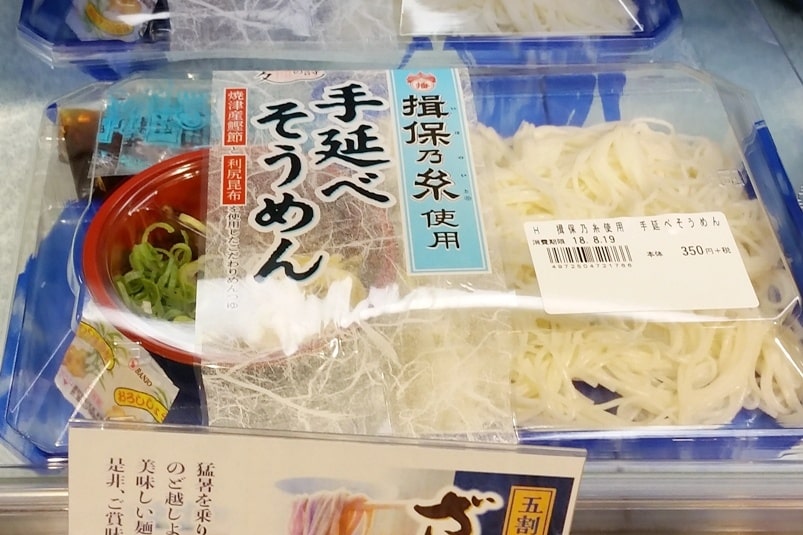






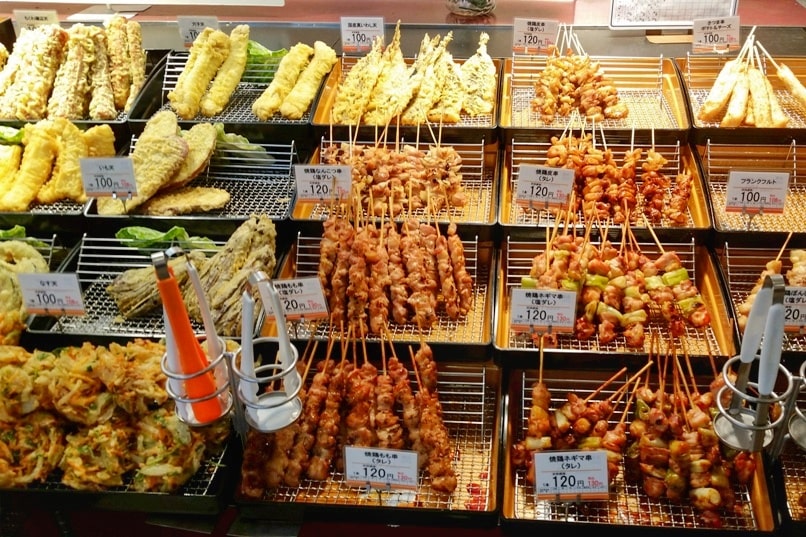

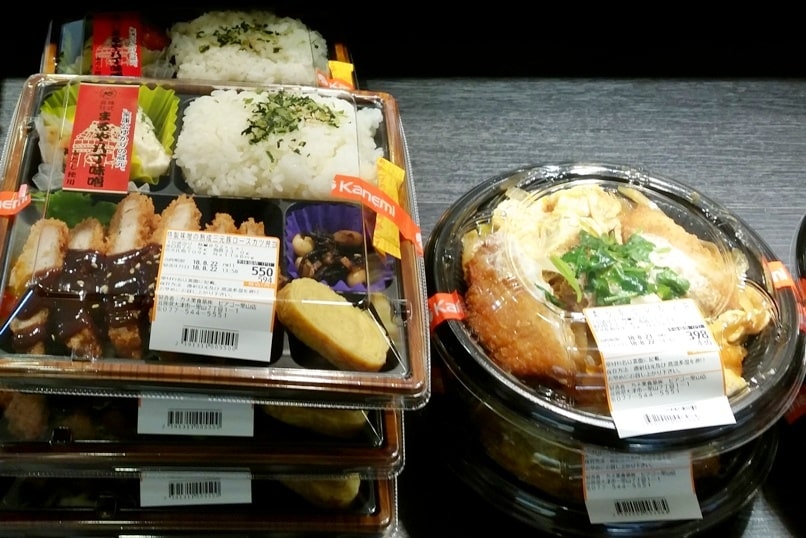
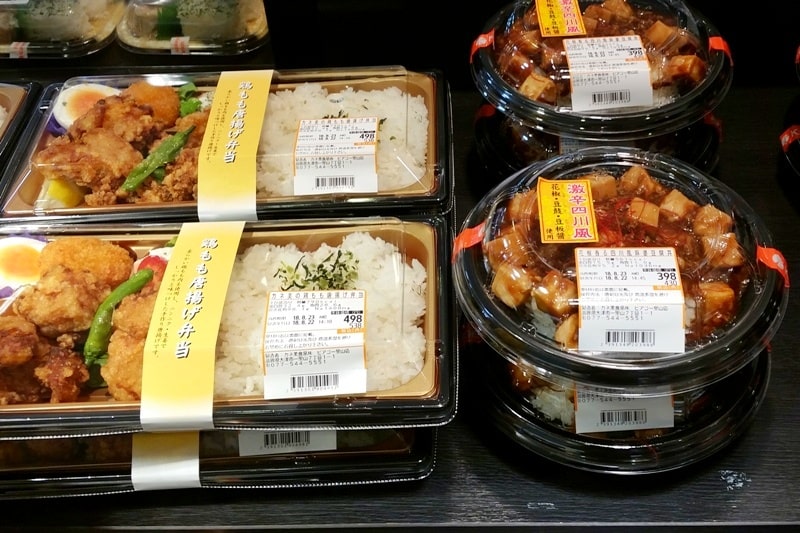






Bakeries
You’ll also likely come across a few bakeries in Japan.
This could be a good place to buy some quick snacks to-go, or buy some breakfast food ahead of time too.
You can also find an assortment of breads and sandwiches at grocery stores and convenience stores.





Train station bento box
aka ekiben
For more convenience, especially when it’s a transit day and you’re at the train station waiting for your train, you may be able to find a meal that will give you a taste of a variety of Japanese food.
Ekiben = eki + ben
eki = station (like train station), and ben is from bento (like bento box).
You’re likely to find these ekiben shops at major train stations in Japan.










Vending machine restaurants
You may come across vending machine restaurants as you’re walking around cities in Japan, and then you might see them at some train stations too.
You’ll pick out the food you want, and then you’ll buy a ticket for that at the “vending machine.”
Then, depending on the restaurant, your order will either be automatically put through, or you’ll hand your ticket over to someone at the restaurant.
Then you’ll sit and wait for your food to be ready!
These types of places also tend to be on the cheaper side compared to regular restaurants.






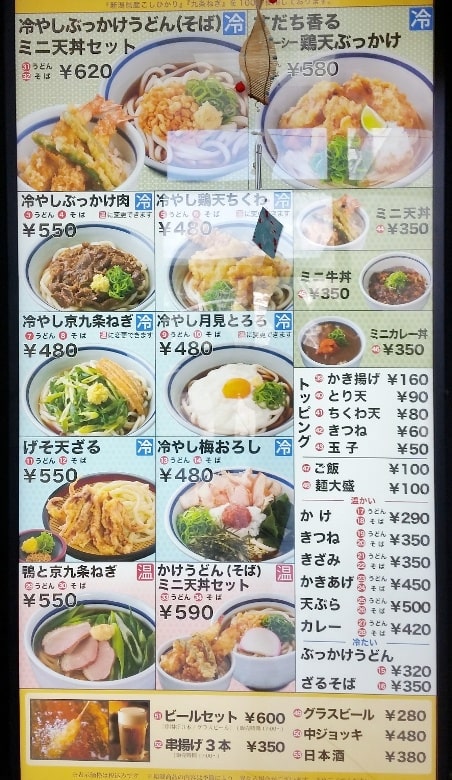


Average restaurant meals
And then there’s the regular restaurants.
You can find them as you’re walking around!






And you may also find a sort of underground network of restaurants.
A couple of places you can find these “underground restaurants” is at places like major train stations and department store buildings.
In general, you can say a regular meal might cost around 1,000 yen (US$10), and then prices will go up from there depending on how nice of a restaurant it is.










And then…
Even more restaurants and cafes as you’re walking around Japan!
As you’re walking along the streets of Japan, you will come across loads of restaurants that range in price range and offer a variety of Japanese foods for you to try!





And…
Japanese teahouse
With Japan being known for green tea, be sure to stop by a Japanese teahouse too!
Some convenient ones in Kyoto might be making a visit to the Nijo Castle teahouse as part of a one day Kyoto bus pass, the Okochi Sanso teahouse as part of your one day in Arashiyama, or the Ginkakuji tea garden as part of the philosopher’s path culture walk!






HAPPY EATING JAPANESE FOOD!

Here are ideas for 5 days in Kyoto!
- Day 1: Top tourist spots with one day Kyoto bus pass
- Day 2: Fushimi Inari Shrine hike through 1,000 torii gates
- Day 3: Philosopher's Path walk
- Day 4: Arashiyama and Sagano
- Day 5: Kurama Kibune Ohara with one day pass
PLUS Kyoto cherry blossom itinerary and Kyoto fall colors itinerary!
Traveling around Japan and can't read Japanese? No problem! Just use the camera on the google translate app!
Is a JR pass worth it?!
- Google maps can make it easy to figure out whether or not you should get a JR pass!
- In google maps, type in your departure and arrival city, and choose the transit icon. The route will come up, and so will the estimated cost at the bottom!
- Here is an example of a train route with cost on google maps.
- So do that for all of your long distance routes to figure out how much it might cost.
- Next, go here to see how much a JR pass costs.
- And compare!
- Not all forms of public transportation are JR, but long distance shinkansen bullet trains are, and that's where the most cost savings will come.
Best of Kyoto (and Japan!)
👇 Explore the best places to visit in Japan!
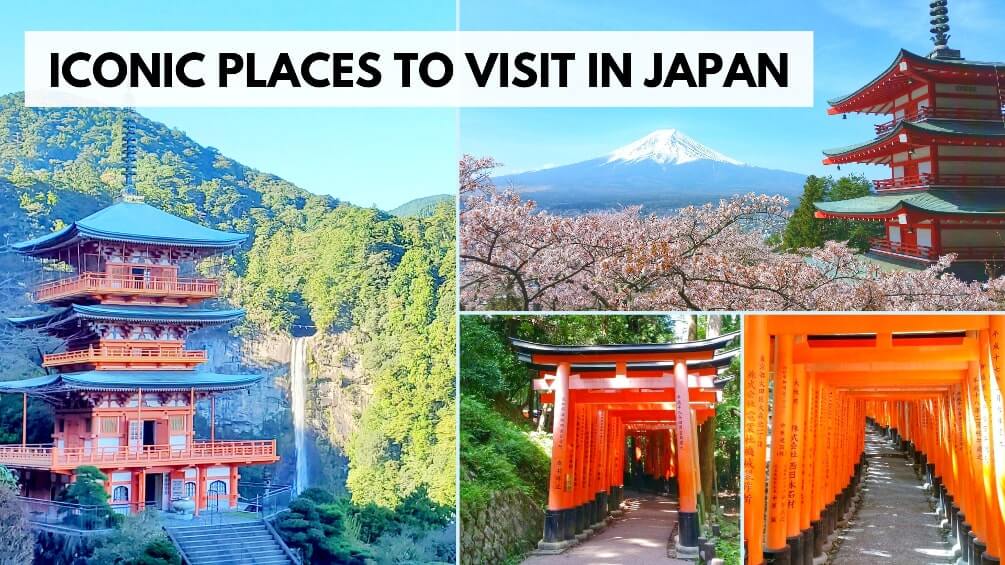
There are affiliate links on this page.
